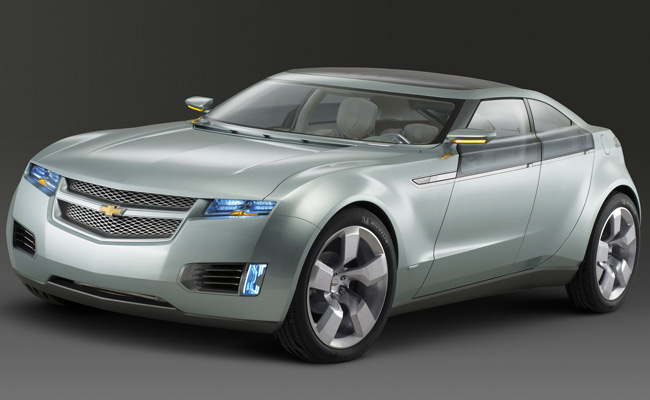Hybrid Cars: How They Work

The paycheck giveth. The gas pump taketh away. With rising gasoline prices as sure as death and taxes, it's time to get to know hybrid cars (or, alternately, bankruptcy court).
The basic problem with automobile gasoline engines is that, to let you blithely roar down the highway, they have to be designed for peak power demands. So, for crawling around the city, they're grossly inefficient. (For waiting at red lights, they are infinitely inefficient.)
In response, hybrids use a battery-powered electric motor in low-power situations, and a gas engine in high-power situations, switching back and forth automatically. The gas engine is simply switched off at red lights, and is often designed to operate in a narrow power range when it is switched on, making it more efficient. The battery is recharged by the gas engine. Generators attached to the brakes can also turn some of the braking momentum (normally lost as heat) into electricity for battery charging.
Of course, in the real world things are more complicated, and in the one we inhabit, hybrids fall into three classifications: full-court full hybrids, half-court mild hybrids and the plug-ins.
Full-court Full hybrids
These cars use electric power for low speeds and low-acceleration settings. When higher speeds or acceleration is demanded, the gas engine comes to life.
Such cars include the Toyota Prius, and hybrid models of the Toyota Camry, Chevrolet Tahoe, Ford Escape, Honda Civic, and Nissan Altima, among others.
Sign up for the Live Science daily newsletter now
Get the world’s most fascinating discoveries delivered straight to your inbox.
The Toyota Prius appears to be the most successful, with a Consumer Reports miles-per-gallon rating of 50 on the highway and 44 in town. That beats even wheeled shoeboxes like the Mini Cooper S (rated at 38 on the highway, 22 in town.)
Half-court Mild hybrids
Half-court hybrids are less elaborate and deliver less fuel efficiency. They have gasoline engines that can cut off while idling, and usually have an electric motor that can give the car a boost, as when accelerating from a stop or when clawing up-hill. The battery is charged, as with the full-court hybrids, by the gas engine and by braking.
These cars include hybrid versions of the Chevrolet Malibu and the Saturn Vue, among others.
The Malibu is a sedan (i.e., it's bigger than the Prius) with a government miles-per-gallon rating of 32 on the highway and 24 in town. The Saturn Vue is an SUV (i.e., it's even bigger than the Malibu) with claimed mileage of 25 in the city and 32 on the highway. Supposedly, that makes it the most fuel-efficient SUV on the market.
Plug-ins
All the hybrids described above charge their batteries with their gas engines — you cannot plug them in and recharge them as if they were huge toys. That was the case with the electric cars that were tested in the 1990s, but their limited range and long recharge times were, indeed, painfully reminiscent of huge toys. They are no longer on the market.
The chief remaining standard-bearer of the plug-in concept in the United States is the Chevrolet Volt, expected to hit the market in a couple of years. It will have an electric motor, a large battery, and a small gas engine. The gas engine will charge the battery, which will run the motor. The concept is similar to that used in diesel-electric submarines, except the Volt weighs about one-seven-hundredth as much, cannot submerge, and does not require a trained crew. You can also plug it in at night to recharge — and thus avoid gas pumps entirely if you are not going more than 40 miles.
Plug-in versions of other hybrids are in the wings, including the Saturn Vue and the Toyota Prius.
If the plug-in concept catches on, wags suggest that we'll dispense with gas engines under the hood and hitch little trailers with generators to the cars. The generators could be powered by small steam engines fueled by firewood, shredded junk mail, dismantled furniture, or, if trends continue, irrelevant tax documents and near-worthless paper money.
Anything but gasoline, in other words.
- Black Gold: Where the Oil Is
- Whatever Happened to Fuel Cells?
- Top 10 Emerging Environmental Technologies
- Recycling Oil and Old Batteries









